- Playa de las Catedrales (Ribadeo, Lugo)
- Playa de Covas (Viveiro, Lugo)
- Playa de A Frouxeira (Valdoviño, A Coruña)
- Playas del Trece (Camariñas, A Coruña)
- Playa de Carnota (Carnota, A Coruña)
- Playa de Baroña (Porto do Son, A Coruña)
- Playa de A Lanzada (O Grove, Pontevedra)
- Playa de Rodas (Cíes Islands, Pontevedra)
As you may already know, Galicia is all about the coast, with the Cantabrian Sea to the North and the Atlantic Ocean to the West. According to the INE, it has around 1,498 kilometers of coastline divided between its three coastal provinces: Lugo, A Coruña, and Pontevedra, making it the leading region in Spain in this regard. Additionally, this coastline is divided into the Rías Altas, from Ribadeo to Finisterre, and the Rías Baixas, from Finisterre to A Guarda. Beyond the calm estuaries, in Galicia you will find wild cliffs and, of course, some of the best and most fabulous beaches.
In this article, we’ll recommend the best beaches in Galicia to visit along the different stages of the Camino de Santiago, many of which offer much more than just a refreshing swim. For this selection—no easy task—we’ll travel from North to South.
Playa de las Catedrales (Ribadeo, Lugo)
Its official name is Playa de Augas Santas, but due to its distinctive rock formations that resemble the arches and naves of a cathedral, it is popularly known as Playa de las Catedrales—the best in the A Mariña Lucense region. A true masterpiece, in fact, it has been declared a Natural Monument and a Site of Community Interest. Located shortly after entering Galicia from Asturias, facing the Cantabrian Sea, it is about 10 kilometers from Ribadeo, a city and capital of the municipality it belongs to in the Province of Lugo, and one of the key locations on the Northern Way. This beach is one of the most visited places in Galicia, and in high season, due to the influx of tourists, you must book a free ticket to visit (make sure the tide is low, otherwise you won’t fully appreciate it).
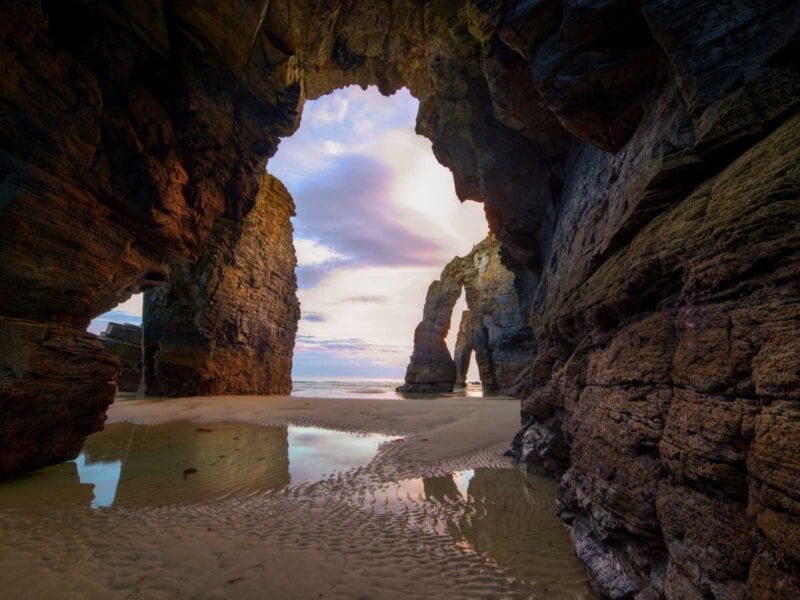
Natural arch at the Beach of the Cathedrals
Playa de Covas (Viveiro, Lugo)
This is an urban beach, very close to the city center of Viveiro, capital of the municipality in the Province of Lugo to which it belongs. With about 1.5 kilometers of fine sand and a shell-like shape, it receives a high volume of visitors during peak season. Various rocky formations dot its inlet within the Ría de Viveiro, called “castelos” (castles in Galician), where several ships once wrecked; the most famous was the Frigate Magdalena, which in 1810 succumbed to a strong storm, resulting in the death of a father and son from the crew. Since then, the Navy prohibited two family members from traveling on the same vessel.
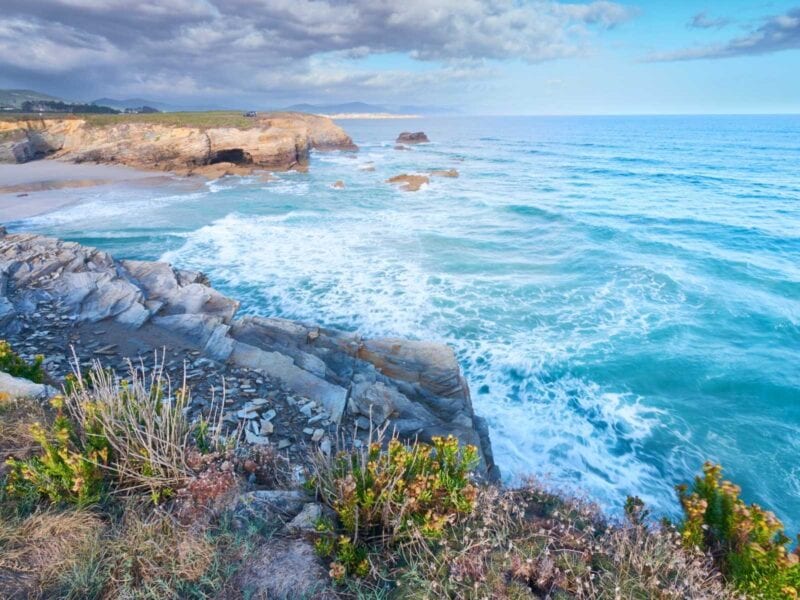
Covas Beach
Playa de A Frouxeira (Valdoviño, A Coruña)
In the town and municipal capital of Valdoviño, in the region of Ferrolterra and the Province of A Coruña, stretches this fabulous 3.5-kilometer-long beach. A Frouxeira Beach is a protected natural area, featuring a lagoon of the same name that is of great ornithological importance. Additionally, it is a surf mecca, hosting national and even international competitions. In fact, in the town center you can visit the only museum in Spain dedicated exclusively to surfing: the Océano Surf Museo.
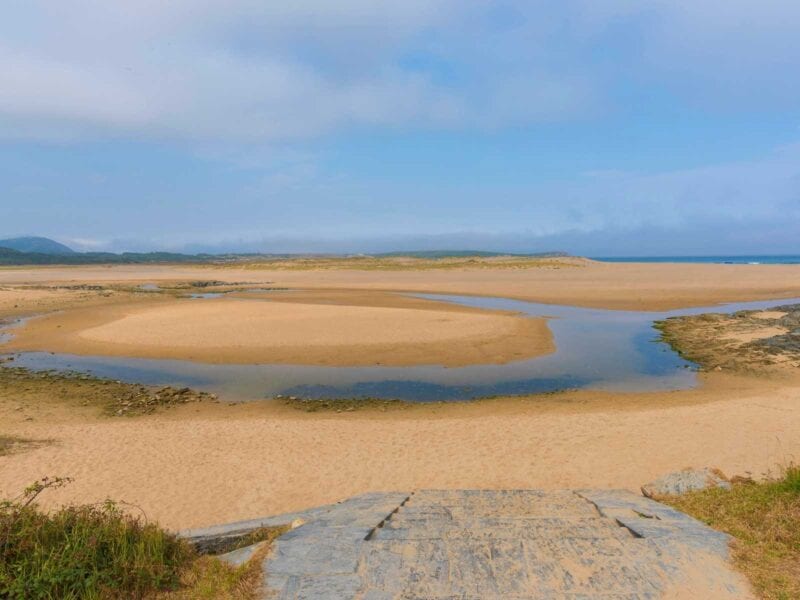
Frouxeira Beach
Playas del Trece (Camariñas, A Coruña)
No list would be complete without some of the beaches of the Costa da Morte, and we’ve chosen the stunning group that forms the Playas del Trece, located in the Municipality of Camariñas, along the Way of the Lighthouses. A virtually untouched natural setting facing the Atlantic Ocean, nestled between the dunes of Monte Branco and the Cemetery of the English and Punta do Boi, where several shipwrecks occurred—most notably that of the British torpedo cruiser HMS Serpent in 1890. A protected, wild nature area where you can pick your spot and likely have the beach to yourself.
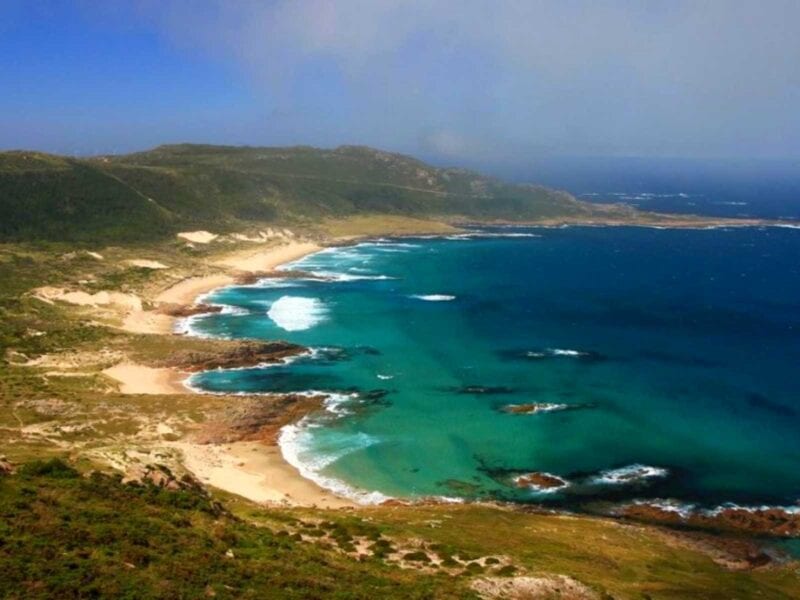
Trece Beach
Playa de Carnota (Carnota, A Coruña)
With its 7 kilometers of sand, it’s considered one of the longest beaches in Galicia. Located in the picturesque town of Carnota, capital of the municipality of the same name in the Province of A Coruña, it has a crescent shape interrupted only by a small stream flowing into the sea. A protected area of high environmental value, it is bordered to the north by the massive granite Monte Pindo—also known as the Celtic Olympus—which is followed by the famous Ézaro Waterfalls. After your swim, you can enjoy a snack in town and admire one of the longest hórreos in Galicia.
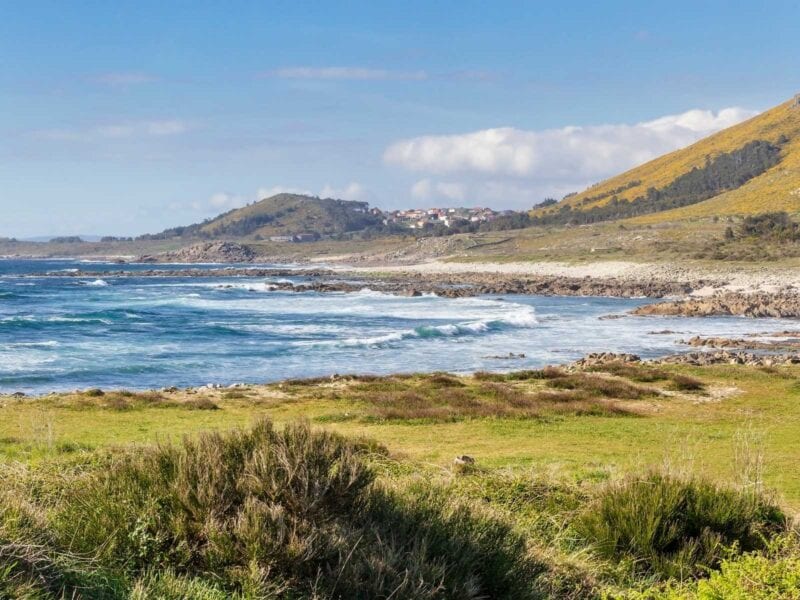
Carnota Beach
Playa de Baroña (Porto do Son, A Coruña)
About 500 meters long, this beach—also known as Area Longa—is located in the Municipality of Porto do Son, a small fishing village in the Province of A Coruña. With moderate waves and not too crowded, you might come across nudists. It is bordered to the north by the spectacular Castro de Baroña, an Iron Age settlement on a peninsula that is well preserved. Near the beach, you’ll find parking and bar/restaurant services.
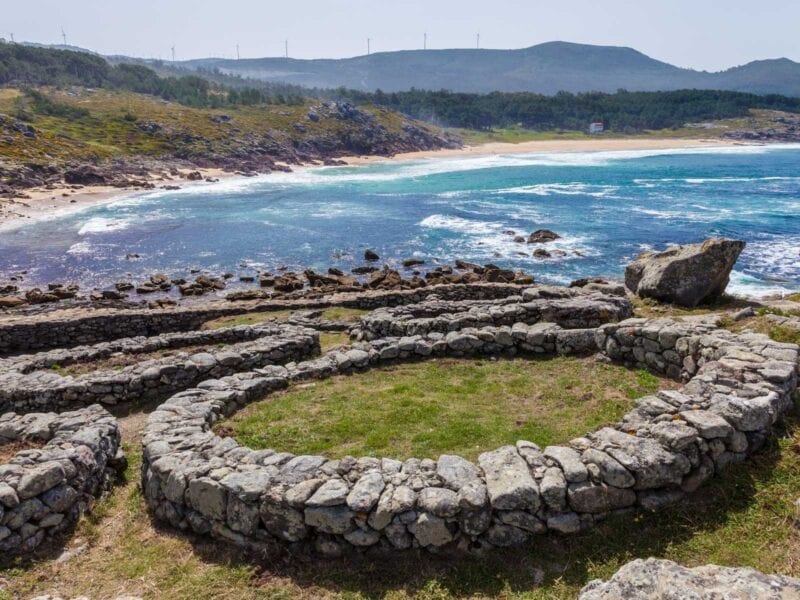
Baroña Beach
Playa de A Lanzada (O Grove, Pontevedra)
This beach, almost three kilometers long, is a regular Blue Flag winner. Near the town of O Grove, capital of the municipality of the same name in the Province of Pontevedra, it’s one of the most famous beaches in Galicia, offering exceptional views in a protected area. Here you can enjoy water sports and explore the local history by visiting the Tower, the Castro, and the Chapel of Our Lady of A Lanzada on the southern end—each filled with timeless legends.
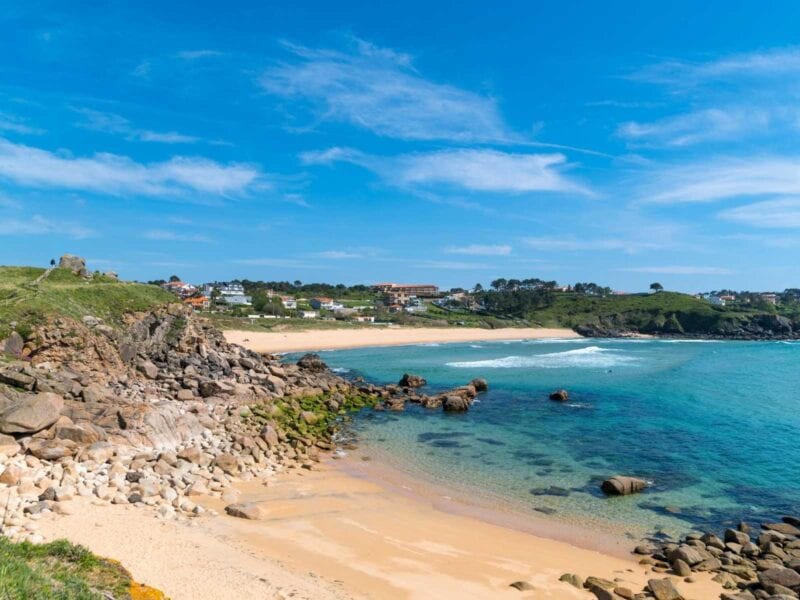
A Lanzada Beach
Playa de Rodas (Cíes Islands, Pontevedra)
Possibly one of the best beaches in Spain and Europe, you’ll understand why they call it “the Caribbean beach” once you visit. Part of the Municipality of Vigo in the Province of Pontevedra, this beach is located on the Cíes Islands, which belong to the Atlantic Islands National Park, at the mouth of the Ría de Vigo facing the vast Atlantic Ocean. The beach, over a kilometer long, connects two islands: Monteagudo to the North and Faro to the South. To access the islands, you must first reserve a spot, then book a ferry from several ports along the Ría de Vigo. The area offers basic services like a bar and restaurant, and you can enrich your visit with short hiking trails always surrounded by the sea—or even go diving. Without a doubt, one of Galicia’s top tourist destinations.
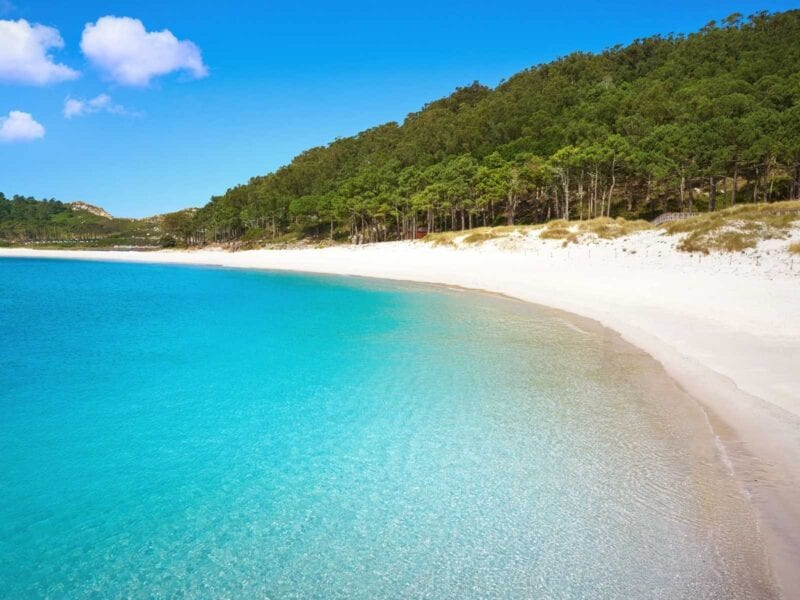
Rodas Beach
One of the defining features of the more than 700 beaches in Galicia is the lack of overcrowding and limited overdevelopment in their surroundings—except for a few cases. Moreover, Galicia is awarded multiple Blue Flags each year, certifying the quality of its waters, sand, and services. As we’ve seen, many of these beaches are protected ecosystems of great ornithological importance. Therefore, it’s everyone’s responsibility to respect and care for them. Will you come take a dip with us?












Leave A Comment